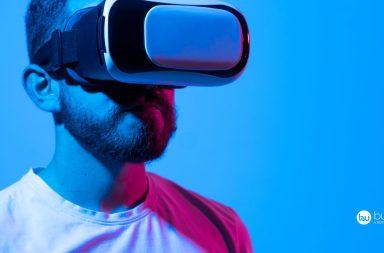A comprehensive look back on the processes that happened in healthcare, digital health and health insurance during this extraordinary year together with the projections for 2021.
Putting together any kind of learnings from 2020 produces an uneasy feeling. With Time magazine dedicating its cover to ‘the worst year ever’ and all social media countdowns ‘till 2021 is finally here’, digging out positive takeaways from this year seems a challenge– and even more if we look into healthcare, with all its struggles and all the tectonic shifts happening in the sector.
However, any challenge can be accomplished with the help of the right person. That is why Digital Health Global Blogs decided to summarize healthcare and digital health trends in 2020 together with Dr. Niti Pall, Senior Mobile and Digital Health Advisor for AXA and other major insurers in emerging markets. Niti is also Medical Director to KPMGs Global Healthcare Practice and Board Chairman of Harbr, a London based health tech accelerator. What’s more, she is a senior doctor who has deep expertise in digital models of healthcare.
Niti’s titles don’t stop here, and another remarkable fact is that she has worked in 44 countries. Niti established and supervised clinics in China, Saudi Arabia, Poland and Hong Kong, and helped create health benefit management systems in the UK, India, Thailand and other countries. She has delivered universal healthcare work in Middle East and India, Kazakhstan and Philippines, Sri Lanka and Indonesia.
Currently Niti is based in Birmingham, UK, and this is where we got her on a call to discuss healthcare and health insurance transformation in 2020.
When talking about healthcare in 2020, the media have changed their message so many times. When the pandemic began, we were hearing about the ‘healthcare collapse’, then about ‘unprecedent digital transformation’ and now, with the start of the vaccination, one can sense a discrete hope of getting back to face-to-face healthcare. Niti, we are now in the middle of December 2020, so what is your consolidated message about this year?
Such an unusual year, right, Anastasiya? We didn’t expect all this to happen. I can clearly remember my first conversation about the pandemic: I was in Spain and a called from Thailand. The news was just breaking that Covid-19 was spreading and a global pandemic was being declared. My Thai colleague told me: well, we have to put a stop to all this digital health work that we’re doing. And my answer was: absolutely not! This is the time to use Covid-19 to get the digital front door for healthcare finally open.
By the way, what my colleague then suggested was opening a Covid-19 clinic and adding the access to it to our insurance offering. Eight months and nine countries later, we reached 1.3 million people by just offering advice over Covid-19. But coming back to my take on this: 2020 has finally opened the digital front door to health care and people have been dragged into the digital arena. It’s been a great learning journey, not just for people but for systems as well.
For example, in the UK, where fast broadband connection wasn’t available in GP surgeries, it appeared when clinicians had to do everything remotely. It means that even the backend – everything that allows the digital ocean to happen – was set up in a hurry. And that happened at a big scale in a lot of the mature economies. Hence, it transformed the way doctors are now going to see their patients.
Indeed, as you mention, some people will breathe a sigh of relief when they think they can go back to doing the way they were – which will be a shame. But the point here is that in order to not go back completely, health systems have to reset themselves. Not just restore, but reset, and that resetting I feel is going to require a balance, because part of the patients still want or need to see a doctor face to face. My takeaway here: a lot of ‘click and brick’ models, as I call them, will appear. These models will take center stage so that brick and mortar providers will be adjusting and provide digital services.
How much of delivering healthcare remains digital? It remains to be seen and will really depend on how the systems respond to this change. I guess governments are getting ready for it while the regulatory response still needs a lot of work. The regulatory response, in my opinion, will be the key to whether the rest of digital health services setting up happens quickly or whether it gets dragged back into the quagmire of ‘this is my data or your data’.
How are we going to do this? Governments have to respond and people like ourselves need to push a lot to make sure we are moving in the right direction and the regulators don’t go back to the place where they were before.
What definitely hasn’t been bad in 2020 is investment in healthcare– that grew up to $18.1 billion globally in Q2 and $21.8B in Q3’20, hitting consequent worldwide records according to CB Insights. Records were also set for the digital health sector – $8.4B in Q3’20. Do you think this growth will continue in 2021 or go down like is already happening with the applications for remote work amidst the news about the mass vaccination?
Healthcare investment indeed has also shifted from brick to click. My guess is, the digital part won’t be as high in 2021 as it was in 2020, is probably going to go down, but it’ll still be there because all the stakeholders realized that the consumer got used to digital access in healthcare. I think a lot of doctors will be relieved that they don’t have to do remote consultations anymore, and maybe healthcare systems will be relieved. I would underline here that patients will still continue to want to use some of the digital solutions because they have learned how to do it.
In addition, I believe that some particular digital health areas will keep attracting more money, like managing chronic diseases and solutions around point-of-care testing and monitoring. Companies have been trying to set up these solutions for quite some time but they just haven’t had enough traction. Now they have got traction, so we expect them to drive more investment.
Niti, coming back to your experience of working in 44 countries and especially your focus on emerging markets. Are there any lessons that healthcare ecosystems and players in developed countries can take from how emerging markets tackled the pandemic?
Absolutely! The biggest crisis that we’re going to face in the next 10 years is the shortage of healthcare workers. We will be nearly 13 million healthcare workers short all across the world by 2035. Low resource countries are already lacking doctors and nurses to an even bigger extent, and they have a lot to teach us because they are already working on low-cost solutions allowing operations to run with very little workforce. Like implementing chat bots to consult with patients, or creating ways to reduce the number of healthcare workers needed at point-of-care testing and diagnostics. Especially with huge numbers of Covid-19 infections, developing countries had to innovate very, very fast because they had no choice.
For example, a company from India I work with, SevaMob, which is a click-and-brick model provider of a very different nature. They have healthcare workers that would go into rural areas with a suitcase kit: visiting one village one day, a second village another day and so on. Suddenly, this model had the reach that no one else had. As Covid-19 hit, the tests as well as Covid-19 assessments were needed. Hence, the company made a move and created pop-up fever clinics and testing centres in a bubble tent.
Now, these clinics are popping up everywhere (put in the context of the modern health systems) supported by point of care testing and a remote doctor in a bigger city. This could be our next model of delivery of health care in the future.
My next question dives into insurance sector takeaways. We faced a lot of uncertainty this year and insurance companies are supposed to be good at assessing and treating uncertainty. Can you comment on the reaction of the insurance sector to the pandemic?
Insurers obviously took a big hit this year: economic uncertainty predisposes to people not renewing premiums while the claims were much higher. However, something important happened in understanding the insurance value for the customer.
I work with AXA in the part of financial inclusion. Our value proposition, rather than offering just insurance, is bringing financial inclusion to people. My takeaway here: healthcare is the most value add service to insurance that insurers worldwide are starting to understand.
Why I am saying that? There are millions of people around the world who have no financial protection whatsoever. In many countries any illness that keeps you away from work leads to you and your family left destitute. With the pandemic, everyone realized at once that you actually need some financial protection that would stop you from losing your job and some critical illness cover.
In Egypt we found that microfinance institutes, MFI, are lending small loans to SMEs, like 30-40 dollars, and when many of the businesses can’t return that loan for whatever reason, the whole thing would come tumbling down. Hence, offering some financial protection, some income protection cover bundled with health advice was something that MFIs sponsored because their position was ‘we would protect our customers in case something happens to them’.
I can see that a lot of innovation is happening in the microinsurance of small products that affect the mass market, especially bundling that with certain value-adding services like healthcare. Another takeaway is connected to insurances finding new distribution channels: through telcos, banks, gamification or even services like Uber. You know, there is a whole new distribution channel that insurance companies have taken advantage of during the pandemic time.
What are the major struggles for insurance companies in this transformation process?
This is a tricky part. One thing is making your paper processes digital – like moving a claim process online. But an even bigger part lies in using the claims process to be the data analytics engine. It means saying: these are the claims that are coming in and there are five related to diabetes, or there are one hundred claims related to diabetes, and then providing and using the whole analytics and making it available for other healthcare stakeholders.
I believe it’s that bit of transformative analysis of data that is going to come in through digitization that insurance companies need to be aware of. I think some of the insurers are ahead of the game, but some of them are catching up – they are just turning paper processes into digital rather than looking at the transformative power of digital. And if the insurers don’t think about the new ways of reaching mass customers, a Kodak moment may come for them as well.
The next challenge for the industry will be to sell this to the mass market. How do we offer financial services to people that don’t have them currently and how do we make the whole process easy for the consumers? We had to deal with a similar task it in Bangladesh and for us it was making sure that the claims were all cashless and got settled within 24 hours.
Finally, Niti, what is your Christmas wish for 2021?
My wish is that people do not work in silos. I see so many digital health companies, I see so many telehealth companies, I see everybody trying to solve one part of the puzzle. We need more partnership among these players.
If someone is trying to solve the front-end access to healthcare via chatbots or via social media channels, and somebody else is trying to solve the digital therapeutic problem by offering a diabetes program, the two need to come together so that the consumer gets better access to the solutions. That whole process of bringing people together to solve the problem for the patient or the consumer is still missing. We still have too many silos, people eating the elephant one bite at a time and not knowing which part of the elephant they are biting.
My wish is also that we make the best use of consumer power or patient power to define what’s required for the future. An example such an initiative is the Open Artificial Pancreas System community (OpenAPS) – these are patients who are driving the effort to make Artificial Pancreas System (APS) technology widely available and help improve the outcomes for people with Type 1 Diabetes. We need to use patients’ power and their ability to share their data to design solutions are actually going to be required, not what people think might be required.



